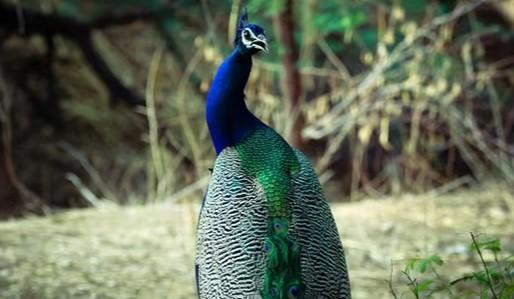
After Tigress, Cubs & Monkeys, 20 Peacocks Die in K’taka: Report
In the midst of an unprecedented series of animal deaths in Karnataka, India, a shocking new development has emerged. In Hanumanthapura village, 20 peacocks were found dead on farmland, adding to the growing list of animal fatalities that has left wildlife enthusiasts and authorities perplexed. The deaths of these majestic birds have raised further concerns about the mysterious circumstances surrounding the decline of Karnataka’s wildlife population.
The news follows the recent discovery of a tigress and her four cubs dead in Male Mahadeshwara Hills, as well as the death of several monkeys in the same region. The cumulative effect of these incidents has left many wondering if there is a common thread that connects these deaths, and if so, what could be the cause.
According to reports, the 20 peacocks were found dead on a farmland in Hanumanthapura village, with no apparent signs of struggle or external trauma. The carcasses were sent for examination to determine the cause of death, with officials from the forest department inspecting the site to gather more information.
The deaths of the peacocks, monkeys, and tigress and her cubs have sent shockwaves through the state, with many calling for a thorough investigation into the matter. Karnataka forest minister Eshwar Khandre has ordered an investigation into the “unnatural death” of the tigress and her cubs, and it is anticipated that a similar probe will be launched into the deaths of the peacocks and monkeys.
The sudden and unexplained deaths of these animals have raised concerns about the environmental and ecological health of the region. Wildlife experts have pointed to a range of potential factors that could be contributing to the decline of Karnataka’s wildlife population, including habitat destruction, human-wildlife conflict, and climate change.
The death of the tigress and her cubs, in particular, has sent a wave of shock and sadness through the state. The tigress was estimated to be around 10 years old, and her cubs were just a few months old. The loss of this family unit has not only deprived the forest of a vital predator-prey balance but has also sparked widespread concern about the long-term viability of the state’s tiger population.
The deaths of the monkeys, meanwhile, have highlighted the importance of preserving the state’s primate population. Monkeys play a crucial role in the ecosystem, serving as seed dispersers and forest regenerators. The decline of this population could have far-reaching consequences for the region’s biodiversity and ecological health.
The death of the 20 peacocks, while perhaps less dramatic than the loss of the tigress and her cubs, is still a significant blow to the state’s avifauna. Peacocks are an iconic and culturally significant species, revered for their stunning plumage and majestic calls. The decline of this population could have significant cultural and ecological implications, particularly in rural areas where peacocks are often seen as a symbol of good fortune.
As authorities continue to investigate the cause of these deaths, it is clear that the people of Karnataka are deeply concerned about the welfare of their state’s wildlife population. The government has a responsibility to ensure the long-term viability of these species, and it is imperative that they take immediate action to address the root causes of these deaths.
In the meantime, wildlife enthusiasts and conservationists are calling for greater awareness and education about the importance of preserving Karnataka’s wildlife population. The state’s rich biodiversity is a valuable asset, not only for its ecological significance but also for its cultural and economic importance. It is up to all of us to take action to protect and preserve this natural heritage, and to ensure that the majestic creatures that call Karnataka home continue to thrive for generations to come.






